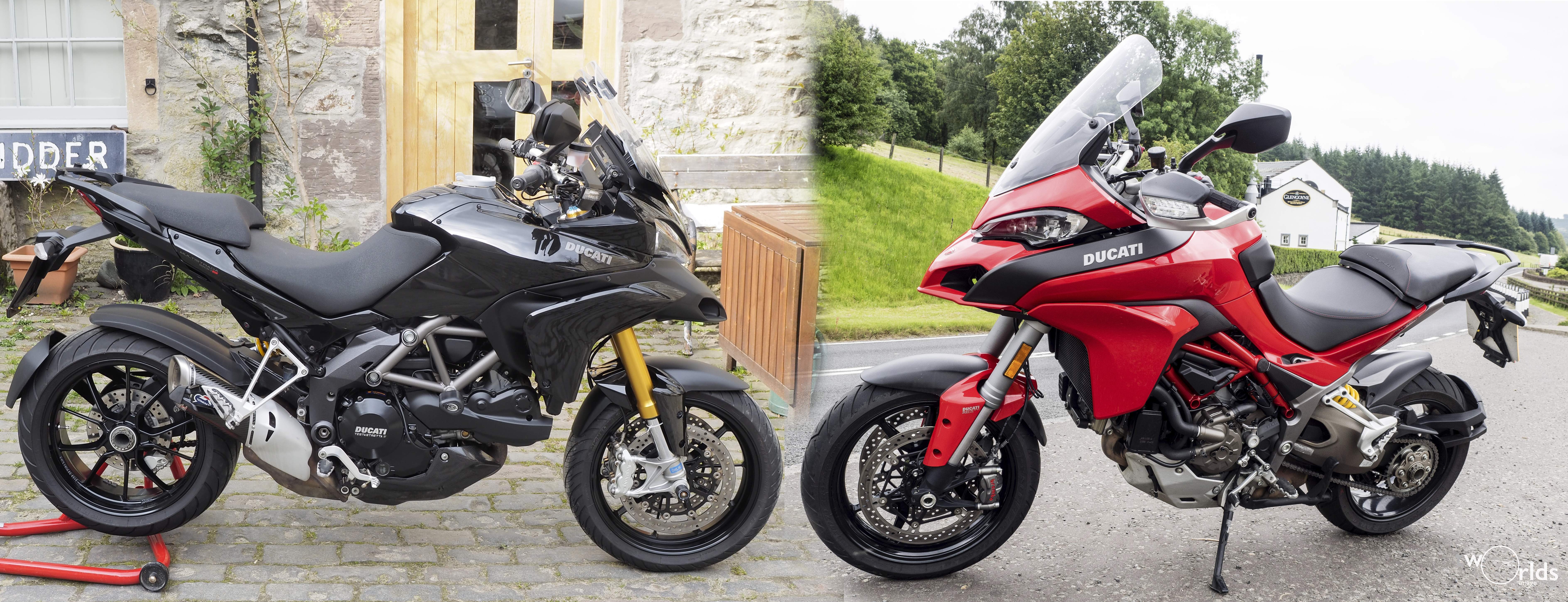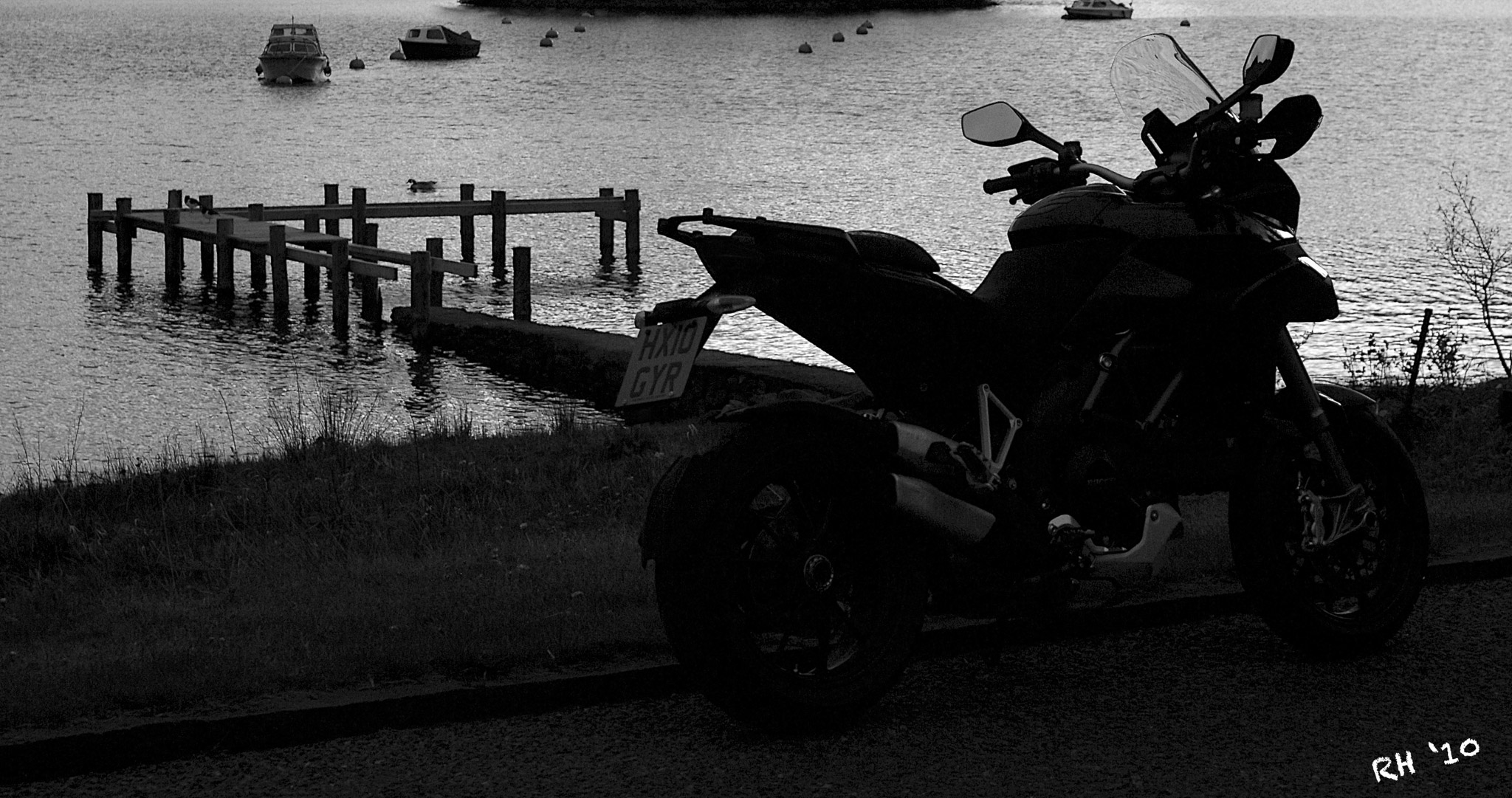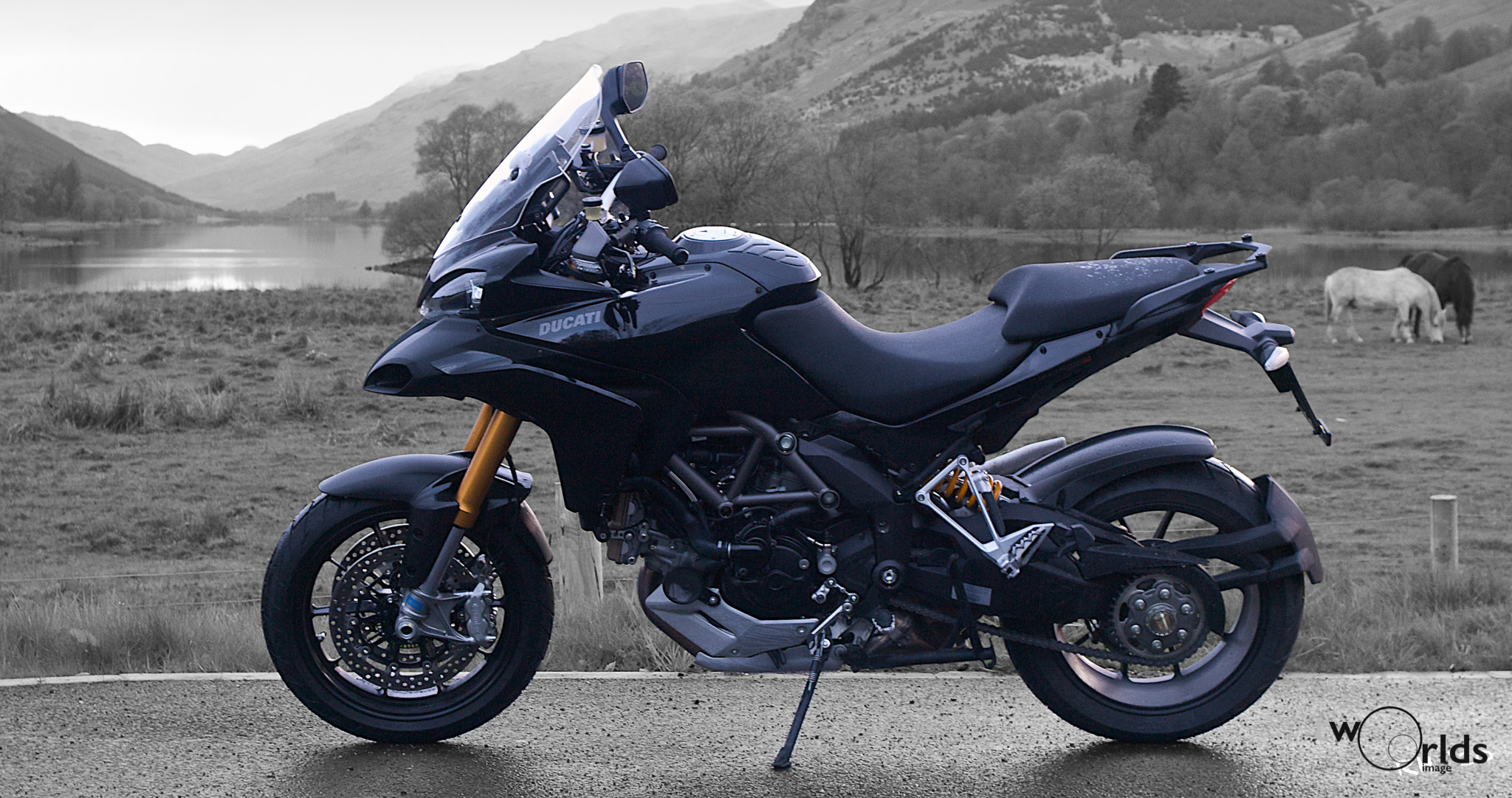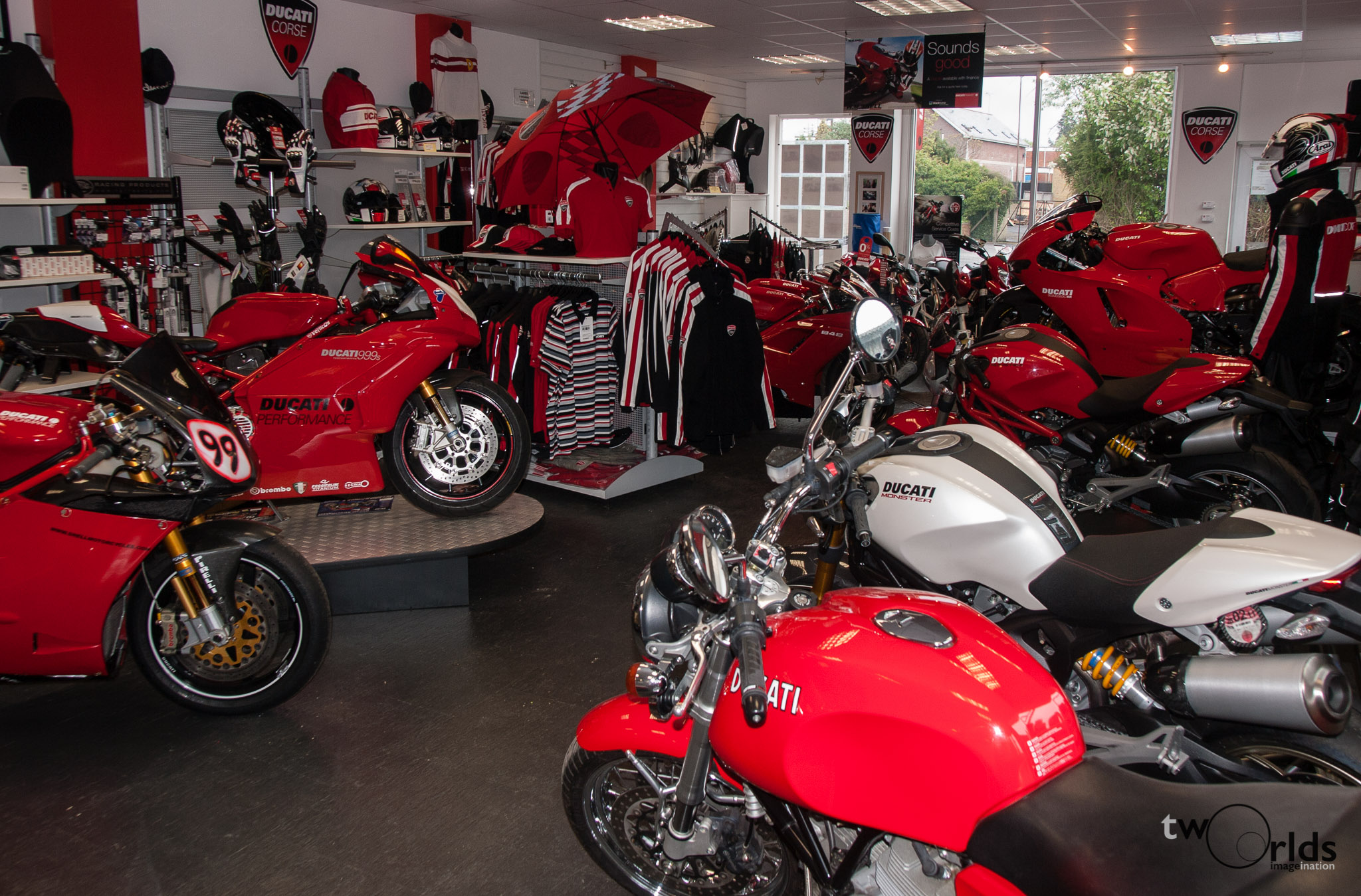Firstly, and for anyone who hasn’t come out of hibernation in the year to date, here’s the what of the new Multistrada, which shares only its name with the previous model. This is a machine with longer wheelbase (in fact about 25mm longer than the R1200GS), long-travel suspension, two comfy seats, an adjustable screen, built-in pannier mounts and dual-purpose tyres. Sounds like a GS then, doesn’t it? But wait, these are Italians we’re talking about: Ducati’s brief to their espresso and adrenaline-crazed design team was very simple: “Build the bike you’d want to ride on the road“. They evidently took that to heart so here we have a machine which in its ‘S’ incarnation has:
- 142 real horsepower delivered at the rear wheel (according to Bike magazine’s dyno — on which the latest GS has just under 100). More to the point, in taking 20bhp off the top-end of the 1198’s engine, they’ve stuck it all back on at the bottom end and mid-range — below 6750rpm, the ‘Strada makes way more power than an 1198, which itself isn’t notably short of low-end grunt. For perspective, a 2010 Honda Fireblade puts out roughly 75bhp at 6000rpm. At the same revs, the Multistrada is punting out about 90bhp. Sure, the ‘Blade has another 20+bhp at the top-end, but the rider has to wind it up first. Meanwhile, the Multistrada is over the hills and far away…
- An all-up weight around 225kg — about 20kg less than a GS, about the same as a VFR800 and just under 20kg more than the current generation of litre-class sports bikes.
- Multiple choices of engine map: full power delivered as fast as you can twist the throttle (wherein it does exactly what it says on the tin), a more relaxed delivery of the same power for touring (especially good for avoiding Nodding Dog syndrome two-up) and a very laid-back 100bhp mode for urban and off-road use.
- Electronically adjustable suspension for everything bar front preload, with four different modes available, each with four sub-modes (labelled solo, solo+luggage, two-up and two-up+luggage), giving a grand total of sixteen suspension modes, all controlled from a handlebar button by an idiot.
- ABS, naturally.
- Traction control, with eight different levels of intervention.
More to the point, all of these bar the ABS are integrated, so that when you switch modes, all adjust at once. And all are completely customisable: you can change settings and assign new settings to any mode or sub-mode. There is also (thankfully) a “Numpty” button to take everything back to stock settings once you’ve terminally confused both yourself and the bike. Oh, and you can switch modes whilst riding — something I was a tad dubious about ahead of time, but it does prove to be a real boon on the road — I can leave Edinburgh, hack across the wet city cobbles in Urban mode (low power, soft suspension and traction control ready to pounce), flip into Touring mode on the motorway (high but relaxed power and firmer but lightly damped suspension to cope with those tedious motorway miles), chop into Sports mode when I peel off onto the glory of my local Highland roads — despatching most visiting sports bikes in the process — and, finally, drop into Enduro mode for the last three miles of broken single track into our village and the near-mile of motocross track that masquerades as our drive. Works for me and the modes really do make a difference to the feel and usability of the bike in each situation.
Continue reading








Recent Comments